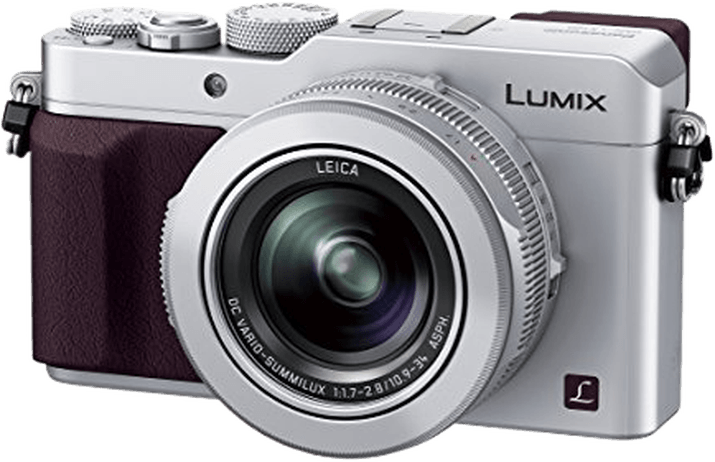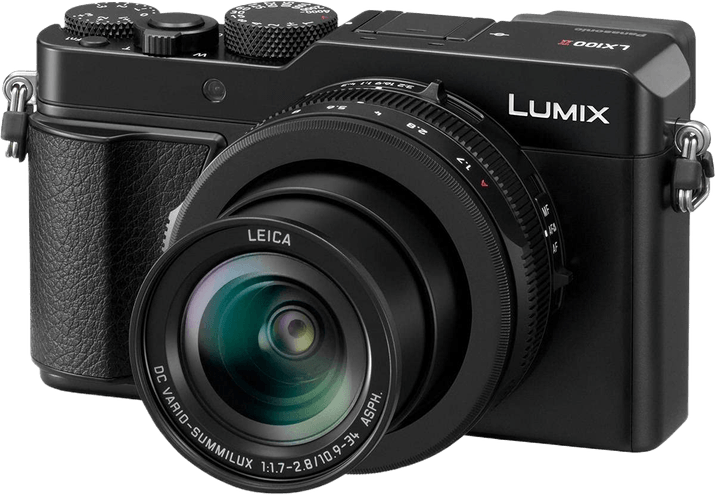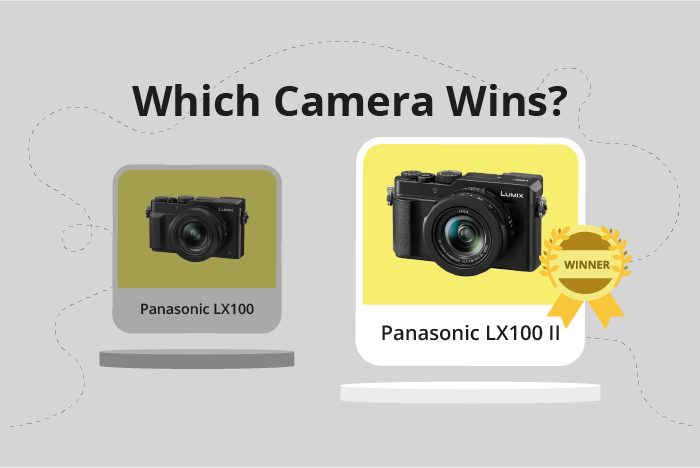Panasonic Lumix DMC-LX100 vs Lumix LX100 II Comparison
Panasonic Lumix DMC-LX100

Panasonic Lumix LX100 II

The Panasonic Lumix LX100 II emerges as the winner with a score of 60/100, while the Panasonic Lumix DMC-LX100 trails behind with 49/100. Both cameras share similarities such as being compact in size, sharing the same dimensions (115 x 66mm) and having a slight difference in weight (LX100 II: 392g, DMC-LX100: 393g).
The LX100 II boasts improvements over its predecessor, the DMC-LX100, such as a higher score, a more recent release year (2018), and enhanced features. However, the DMC-LX100 has a slightly lower launch price of $899 compared to the LX100 II’s $999.
Taking these factors into account, the LX100 II is the superior choice due to its better performance and updated features. The DMC-LX100 may appeal to those looking for a more budget-friendly option, but the LX100 II ultimately offers a better overall experience.
Panasonic Lumix DMC-LX100 vs Lumix LX100 II Overview and Optics
The Panasonic Lumix LX100 II wins the optics comparison with a score of 58/100, while the Panasonic Lumix DMC-LX100 receives a score of 56/100. Both cameras share several specifications, including an 11 fps shooting speed, CMOS sensor type, Venus Engine processor, Micro Four Thirds sensor size, fixed lens mount, and image stabilization.
The Lumix LX100 II outperforms the DMC-LX100 with its increased megapixel count of 17, compared to the DMC-LX100’s 12.8 megapixels. This higher resolution allows for more detailed and sharper images. Additionally, the LX100 II has a higher DXOMARK sensor score of 71, compared to the DMC-LX100’s score of 67, which indicates better overall image quality and low-light performance.
On the other hand, the Lumix DMC-LX100 does not have any specific advantages over the LX100 II in terms of optics. Both cameras share the same shooting speed, sensor type, processor, sensor size, lens mount, and image stabilization. Therefore, the DMC-LX100 does not outperform the LX100 II in any key aspect of optics.
Given the similarities in specifications, the main difference between the two cameras lies in the higher megapixel count and DXOMARK sensor score of the Lumix LX100 II. This results in better image quality and low-light performance, making it the superior choice for those prioritizing optics. While the Lumix DMC-LX100 shares many features with its successor, it does not surpass the LX100 II in any significant way regarding optics.
Panasonic Lumix DMC-LX100 vs Lumix LX100 II Video Performance
The Panasonic Lumix DMC-LX100 outperforms the Panasonic Lumix LX100 II in video capabilities with a score of 70/100 compared to 69/100. Both cameras share common specifications, including 4K max video resolution and max video dimensions of 3840 x 2160. However, there are differences that contribute to the DMC-LX100’s higher score.
The DMC-LX100 has a max video frame rate of 30fps, while the LX100 II offers a higher frame rate of 60fps. Despite the LX100 II’s advantage in frame rate, the DMC-LX100 still secures the higher score due to its built-in time-lapse functionality. This feature allows users to create stunning time-lapse videos with ease, providing an added level of creativity and versatility.
On the other hand, the LX100 II does not have built-in time-lapse functionality, which may be a drawback for some users. However, its higher frame rate of 60fps allows for smoother video playback and better slow-motion effects, making it a suitable choice for those prioritizing these aspects in their video shooting.
Taking these factors into account, the Panasonic Lumix DMC-LX100 emerges as the winner in video capabilities due to its built-in time-lapse feature. This advantage outweighs the LX100 II’s higher frame rate, which does not significantly impact the overall video performance. Users seeking a camera with excellent video capabilities, including time-lapse functionality, will find the DMC-LX100 to be the better option.
Panasonic Lumix DMC-LX100 vs Lumix LX100 II Features and Benefits
The Panasonic Lumix LX100 II emerges as the winner in this comparison with a feature score of 70/100, while the Panasonic Lumix DMC-LX100 scores 41/100. Both cameras share common specifications such as a 3-inch screen size, lack of GPS, and WIFI capabilities.
The LX100 II surpasses the DMC-LX100 with its higher screen resolution of 1,240,000 dots compared to 921,000 dots. This difference results in a clearer and sharper display on the LX100 II. Additionally, the LX100 II boasts a touchscreen, making it more user-friendly and easier to navigate compared to the DMC-LX100, which lacks this feature. The LX100 II also has Bluetooth connectivity, further enhancing its versatility and ease of use.
On the other hand, the DMC-LX100 has a flip screen, which the LX100 II lacks. This feature can be useful for capturing shots from different angles and for vlogging purposes. However, this advantage is not enough to outweigh the benefits offered by the LX100 II.
Taking into account the differences in features and the overall scores, the Panasonic Lumix LX100 II is the superior camera in this comparison. Its higher resolution screen, touchscreen capabilities, and Bluetooth connectivity make it a more advanced and user-friendly option. Although the DMC-LX100 has a flip screen, the benefits provided by the LX100 II outweigh this single advantage. Therefore, the Panasonic Lumix LX100 II is the better choice between these two cameras.
Panasonic Lumix DMC-LX100 vs Lumix LX100 II Storage and Battery
The Panasonic Lumix LX100 II outperforms the Panasonic Lumix DMC-LX100 in storage and battery, with a score of 35/100 compared to the DMC-LX100’s 16/100. Both cameras share similarities in storage, having one memory card slot and accepting SD, SDHC, and SDXC (UHS-I compatible) cards.
The LX100 II’s superiority lies in its battery life and charging options. It offers 340 shots per charge, surpassing the DMC-LX100’s 300 shots. Additionally, the LX100 II utilizes a DMW-BLE9 battery type and provides USB charging capabilities, while the DMC-LX100 uses a DMW-BLG10E battery and lacks USB charging.
The DMC-LX100 does not have any advantages over the LX100 II in terms of storage and battery. Therefore, the LX100 II proves to be the superior choice for those prioritizing longer battery life and convenient charging options. This comparison solidifies the LX100 II as a better camera in the storage and battery aspects.
Alternatives to the Panasonic Lumix DMC-LX100 and Lumix LX100 II
Are you still undecided about which camera is right for you? Have a look at these popular comparisons that feature the Panasonic Lumix DMC-LX100 or the Panasonic Lumix LX100 II:
- Panasonic Lumix DMC-LX100 vs Lumix DMC-GX80
- Panasonic Lumix LX100 II vs Sony Cyber-shot DSC-RX100 VII
- Fujifilm X100V vs Panasonic Lumix LX100 II
- Panasonic Lumix DMC-LX100 vs Sony Cyber-shot RX100 IV
- Panasonic Lumix LX100 II vs Sony Cyber-shot DSC-RX100 VA
- Canon PowerShot G7 X Mark III vs Panasonic Lumix LX100 II

